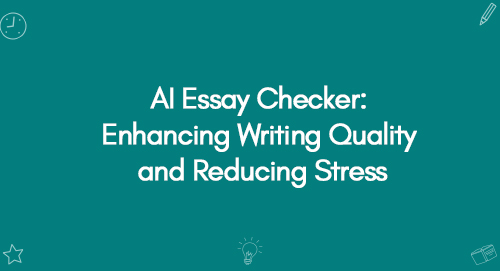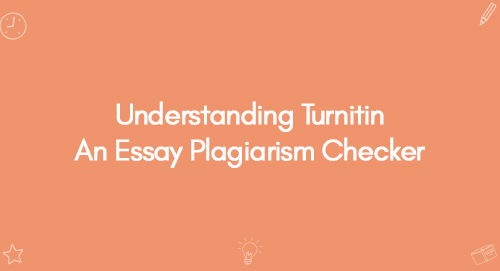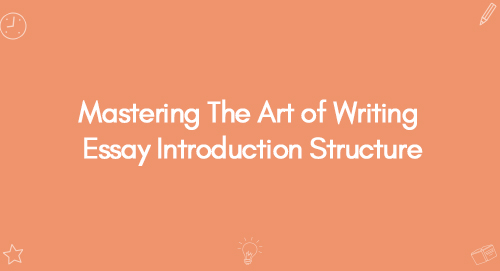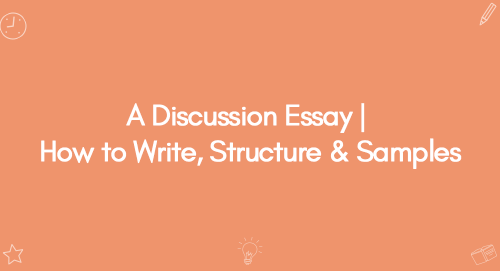How to Write a Persuasive Essay: Tips with Examples
How to Write a Persuasive Essay: Tips with Examples

How to Write an Academic Essay: A Comprehensive Guide
October 4, 2022When assigned a persuasive essay, many students dread the thought of having to argue a point they don't believe. However, with the right approach, writing a persuasive essay can be easy and even fun. This guide will cover practical tips and examples on how to write an essay that persuades.
A persuasive essay is a writing type that attempts to convince the reader to agree with the writer's point of view. An excellent persuasive or argumentative essay will use evidence to support the writer's point of view, including facts, statistics, and testimonials. You can leverage emotional appeal and strong rhetoric to make your reader side with you. A persuasive essay will convince your reader to admit your point of view. Following are key points associated with the persuasive essay:
A clear and concise thesis statement
The thesis statement is the most crucial element of a persuasive essay. The thesis statement presents the argument that the author is trying to make. It should be concise and clear and located at the beginning of the essay so that the author can easily find it.
Evidence to support the thesis statement
Evidence is considered factual information that supports the accuracy of a claim being made in the essay. Generally, to find evidence, writers have to conduct their own research that could support the idea behind the study. Therefore, the evidence must be provided to support the claims to persuade readers of an argument. This evidence can take many forms, including statistics, expert testimony, and examples.
A logical structure
A persuasive essay must be well-organized in order to make its argument convincing. The essay should have a clear introduction, body paragraphs presenting the evidence, and a conclusion summarising the discussion. In order to write an effective persuasive essay, it is necessary to add specific points of discussion to each section of the essay.
Free Premier Essay Writing Topics
Essay Writing is an essential part of academics which presents the ideas, arguments, opinions, or positions of the writer regarding the topic. The writer supports his claims using facts, evidence, or survey studies.
- Clear presentation or understanding of the type of essay
- An appealing introduction with an unambiguous thesis statement
- A well-defined structure of body paragraphs supporting the thesis
A prospective conclusion with an optimistic tone
Difference between argumentation and persuasion
Argumentation and persuasion are often used alternatively, but there is actually a subtle difference between the two. An argumentative essay requires the author to investigate a certain topic, including collecting, generating, and evaluating evidence and portraying the piece of writing concisely. While on the other hand, a persuasive essay simply attempts to persuade the reader to take action. Argumentative authors tend to write logically while maintaining a fair and reasonable tone, whereas persuasive authors are more subjected to presenting what a reader wants to persuade them. Therefore, in an argumentative essay, the writer must present both sides of a certain issue by presenting arguments and counterarguments in order to provide evidence to support their own position. In a persuasive essay, on the other hand, the writer only needs to present their position and provide evidence to support it. While persuasive essays can be effective, they are not as effective as argumentative essays in terms of changing the reader's opinion.
Three fundamental elements of a persuasive essay
Aristotle coined the modes of persuasion as three essential elements that work together to make a persuasive argument.
Ethos
Ethos is about convincing the audience of the author's credibility or ethics. Credibility is crucial because it makes the argument more believable and trustworthy. For example, if you're writing about why animal testing is wrong, using statistics from credible sources will help to make your argument more persuasive.
Pathos
Pathos is about emotionally charged language and images designed to create an emotional response in the audience. It can be done by using language that evokes certain emotions or telling stories that tug at heartstrings. For example, if you're trying to convince your reader that animal testing is wrong, you might tell a story about a particular animal that was mistreated in a laboratory.
Logos
Logos is about using logical arguments and reasoning to persuade the reader. This can be done using facts, data, statistics, examples, and testimonials. For example, if you're trying to convince your reader that animal testing is wrong, you might use statistics about how many animals are hurt or killed in yearly experiments.

Structure of a Persuasive Essay
The structure of a persuasive essay is essential to hold together your arguments and convince your readers that you are right. In general, persuasive essays have three main sections:
The introduction
The introduction is where you will present your thesis statement. That is the central argument of your essay, and it should be clear and concise.
The body
The body is where you will develop your arguments and support your thesis. Each paragraph should focus on one particular point, and you should use evidence from research to support your claims.
The conclusion
The conclusion is where you will summarize your arguments and restate your thesis. This is your last chance to convince the reader, so make sure to leave a strong impression.
By following this structure, you can keep your essay well-organized and convincing. With a clear structure, you can easily engage your readers and persuade them to see things from your standpoint.
10 Tips for writing a persuasive essay
Start with an attention-grabbing opening.
You want your readers to be engaged from the very beginning. Starting your essay with an attention-grabbing statement is always beneficial. It could be a shocking statistic, an exciting story, or a controversial opinion.
Make a clear thesis statement.
Your thesis statement is the core contention of your essay. Draft it clearly and concisely. A good thesis statement can convey the idea in one or two sentences.
Support your thesis with evidence.
To persuade your readers, you must come up with evidence and strengthen your claims. You can leverage data from research, statistics, personal anecdotes, or anything that supports your argument.
Use strong language.
When trying to persuade someone, using strong and convincing language is essential. Avoid words like "maybe" or "might" to sound confident. Instead, use words like "definitely" or "certainly," which will make your argument sound more convincing.
Be logical in your reasoning.
Your readers are more likely to be persuaded by an argument based on logic and reason than by one based on emotion alone. So, make sure your argument is well-reasoned and supported by evidence.
Anticipate objections and address them head-on.
If you can anticipate your readers' objections to arguments, you can address them head-on and try to dispel them before they have a chance to take hold. This will make your argument seem more robust and persuasive.
Leverage the power of ethos, pathos, and logos.
Ethos refers to the writer's credibility, pathos appeals to the reader's emotions, and logos uses logic and reasoning to make the argument more persuasive. Using all three techniques will give your essay a well-rounded approach and make it more persuasive overall.
Be confident in your argument.
If you believe in what you are arguing, it will be evident in your writing and make your essay more persuasive. Be assertive and stand by what you say without being aggressive.
Conclude firmly.
End your essay with a powerful conclusion that leaves no doubt in the reader’s mind about your opinion. A firm conclusion should sum up all of the main points of your essay and leave the reader feeling convinced.
Edit and proofread carefully before submitting.
Ensure to edit and proofread your essay carefully before submitting it. Any grammar, spelling, or punctuation errors could weaken your argument, so catching them before turning in your paper is crucial.
Review the following:
- How to write an academic essay: Tips and Examples
- How to write a comparative essay: Best examples and practices
- The Anatomy of an essay. How to structure your essay for maximum impact
Need help with your essay?
Contact Premier Dissertation today by simply dropping us a message on Whatsapp message or by Email, if you need help getting your persuasive essay off the ground. We have a team of experienced writers who can help you take your essay from good to great. With our expertise, you'll be able to write a persuasive essay that will have your reader convinced by your argument. Contact us today to get started!
Related Topics
- Generic nouns
- Specific nouns
- Group nouns
- Individual pronouns
- Mass and discrete nouns
Examples
- Generic nouns
- Specific nouns
- Group nouns
- Individual pronouns
- Mass and discrete nouns
Other
-
Generic nouns
-
Specific nouns
-
Group nouns
-
Individual pronouns
-
Mass and discrete nouns
















